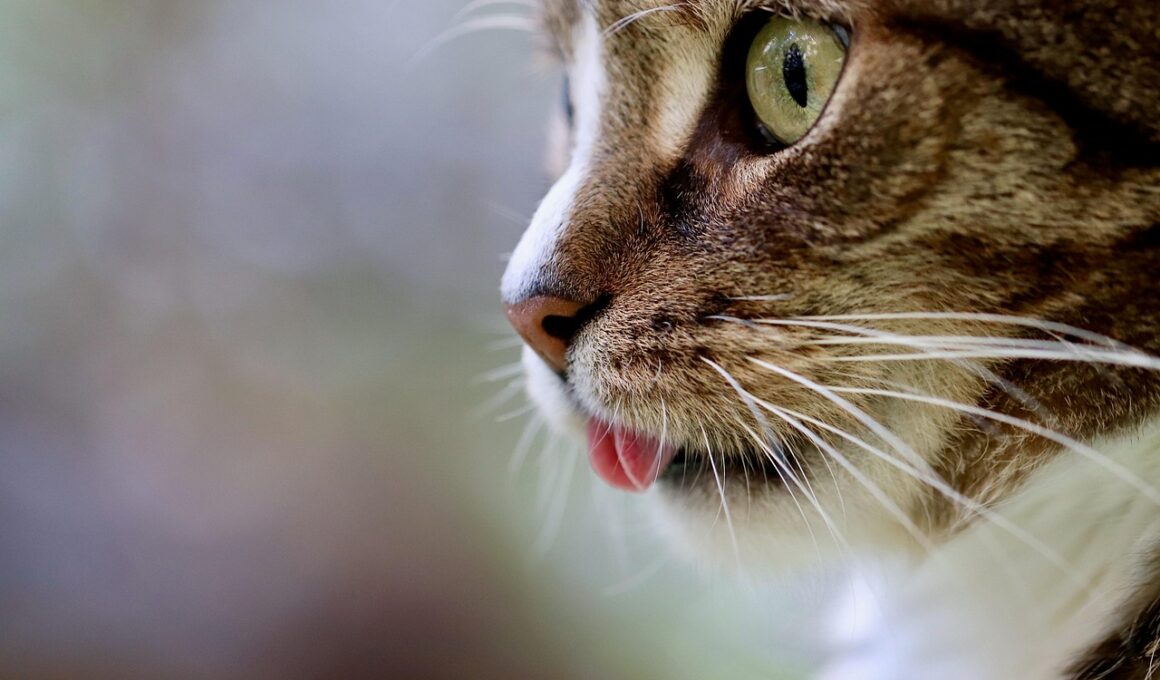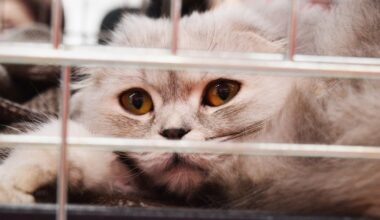Training Your Cat for Car Travel: Long Distance Edition
Traveling long distances with your cat can be an enjoyable adventure when properly prepared. Before embarking on your journey, establish a safe and comfortable travel space for your feline friend. Invest in a high-quality cat carrier that is well-ventilated and sturdy. Introduce your cat to the carrier several weeks prior to your trip, allowing them to explore it freely. Fill the carrier with familiar blankets and toys to provide comfort and security. You can gradually familiarize them with the idea of travel by taking short drives. During these excursions, monitor their behavior and crate comfort levels. Use treats and praise to reinforce a positive association with the car and the carrier. If your cat exhibits anxiety during car rides, flock to calming pheromone sprays or infused collars to soothe their nerves. Keeping the atmosphere calm during your trips is essential to your cat’s comfort. Remember to take regular breaks during long trips for both you and your pet. Taking the time to prepare will ensure a safe and pleasant long-distance journey with your cat, fostering an enriching experience for both of you.
Prior to your trip, it’s crucial to ensure your cat is in good health. A visit to the veterinarian is strongly advised to check for any potential health issues that could complicate travel. Update vaccinations, especially rabies, as required by states you travel to or through. Inquire whether a sedative is recommended for your cat during longer trips. If so, make sure to test the sedative at home before the actual travel date. Acquiring an emergency kit can be beneficial; include a copy of pet medical records, basic medications, and even a small first aid kit. For longer distances, ensure hydration by providing fresh water frequently. Use spill-proof dishes to prevent messes while driving. Be prepared with enough food, and bring familiar food to avoid digestive problems from sudden changes. Monitor your cat’s eating habits, ensuring they’re still interested in food and water during the travels. Bringing your cat’s favorite items contributes to a relaxed environment. Preparing these aspects of your journey will help ensure a seamless transition for your furry companion as you traverse the miles to your destination.
Making Travel Comfortable for Your Cat
Creating a comfortable environment for your cat during travel can significantly lessen anxiety reactions. Ensure your car is a safe space, as sudden movements or loud noises can startle your cat. Allow your cat to explore the vehicle opposed to confining them initially. Once your cat feels more at home in the car, secure the carrier with a seatbelt to prevent sliding during travel. This fosters a sense of safety during the ride. Maintain a gentle temperature within the vehicle; too hot or cold can lead to distress. Pack a blanket or pillow that smells like home to help them feel secure. Additionally, consider using calming music or natural noises, which can have a soothing effect. You can also turn the car temperature down for 10-15 minutes before hitting the road to acclimate them to a cooler environment. Avoid giving them food immediately before travel to prevent motion sickness. When breaks are taken, allow them out of the carrier in a safe, contained area where they can stretch and take care of their business. Remember to never leave your cat unattended inside the vehicle.
Establishing a routine is incredibly helpful during your travel escapades. Cats thrive on routine, and traveling is no different. This means allying eating, drinking, and bathroom breaks to certain times following that routine. This generates predictability, alleviating anxiety for both you and your feline friend. Before your trip, practice the routine at home to prepare your cat for what’s to come. Set specific times to feed, play, and allow bathroom breaks so your cat can acclimate their biological rhythm alongside yours. If you’re stopping over nights during your travels at pet-friendly hotels, maintain the same routine as home as much as possible. During the journey, plan regular breaks approximately every 2 to 3 hours to allow your cat to relieve itself and stretch out. Use these breaks to offer water, food, or play. It could also help to make notes of cat-friendly rest-stops or overnight accommodations en route. Restaurants with outdoor seating can be great for breaks as well. This structured plan gives your cat reassurance as you travel long distances together, reducing stress and fostering companionship throughout the journey.
Monitoring Your Cat’s Behavior
Being vigilant about your cat’s behavior is essential during a long journey. Cats may express anxiety or discomfort in various ways, such as excessive meowing or hiding. Watch for signs of stress, such as panting or going into a crouched position in the carrier. If your cat shows signs of distress, immediately pull over in a safe location. Offer them comfort through gentle words and petting through the carrier’s opening, a reassuring voice can work wonders. Timing is key; if you observe anxious behavior, it might be wise to create frequent stops for comfort. Use these breaks for interaction, offering treats, or gentle play to reduce stress levels. If the anxiety levels seem high, consider speaking with your veterinarian about using calming products, such as pheromones or natural calming treats. Keeping your cat occupied with toys or engaging them in gentle play can assist during longer stretches of travel. Be sure to adjust based on your cat’s reactions. Understanding these subtle signals will help you navigate the trip more smoothly and provide your feline the support it needs during your travels.
When planning stops along your travel route, it’s crucial to choose pet-friendly locations. Research ahead of time which midpoints along your route offer accommodations allowing pets, including hotels, motels, and campsites. Look for pet-friendly parks to let your cat stretch its legs. Some areas have designated pet relief zones, which can be very convenient. It’s also beneficial to familiarize yourself with nearby veterinary clinics in case of emergencies. The increasing popularity of pet travel means more establishments are catering to pet owners, so utilize this advantage. Leash training your cat can be helpful when making pit stops; this allows your cat to explore safely with supervision. A harness provides better control than a collar, preventing escapes. Remember to bring water and snacks for yourself and your furry friend. Make sure to have waste bags handy for cleanup after your cat’s bathroom breaks, keeping litter-free areas. This practice contributes positively to the public perception of pet owners and helps promote a responsible attitude towards pet travel. Whenever you stop, make it enjoyable for both you and your cat to reenergize before continuing your journey.
Post-Travel Check and Care
Once you reach your destination, performing a thorough check on your cat is essential. Assess your cat for any signs of distress or fatigue after your long journey. Cats put up very few signals but understand their normal behavior is vital. If your cat seemed anxious or overly stressed, give them a designated quiet space to recover as the initial adjustment can be trying. Familiarize your cat with its new environment by allowing it to explore at its own pace, all while providing familiar comforts from home. After the travel, ensure your cat eats and drinks regularly; monitor their habits for any changes. A little appetite loss is normal but consult a vet if it persists. Keep things calm initially, encouraging your cat with gentle toys or interactive play. Gradually integrate them into your routine in the new space, allowing time for adaptation. This is the perfect moment to schedule a follow-up trip to the vet if required. By showing your cat compassion and understanding while traveling, you will deepen the bond and make their transition to a new place enjoyable.
Embarking on long-distance travels with your cat can be a rewarding experience when done thoughtfully. However, it’s essential to remain responsive and attentive to your pet’s needs throughout the entire process. By familiarizing your cat with travel beforehand, implementing a comforting routine, and being watchful for signs of stress, the journey can evolve into an incredibly positive experience. Prioritize their health with veterinary visits and ensure that breaks are strategically placed to recharge both their minds and bodies. Remember, everything in moderation; allow your cat to take as much time as necessary to adjust. Collecting information about pet-friendly stops along your route will further ease the journey for them. Having an emergency kit on hand is invaluable in ensuring that you are prepared for unforeseen circumstances. With effort and patience, you will develop methods that work for both you and your pet, creating memorable experiences. In the end, having a well-trained and comfortable cat can transform the anxiety of long-distance travel into a cherished road adventure. Be proactive, prioritize comfort, and don’t forget to have fun together on your journey.


